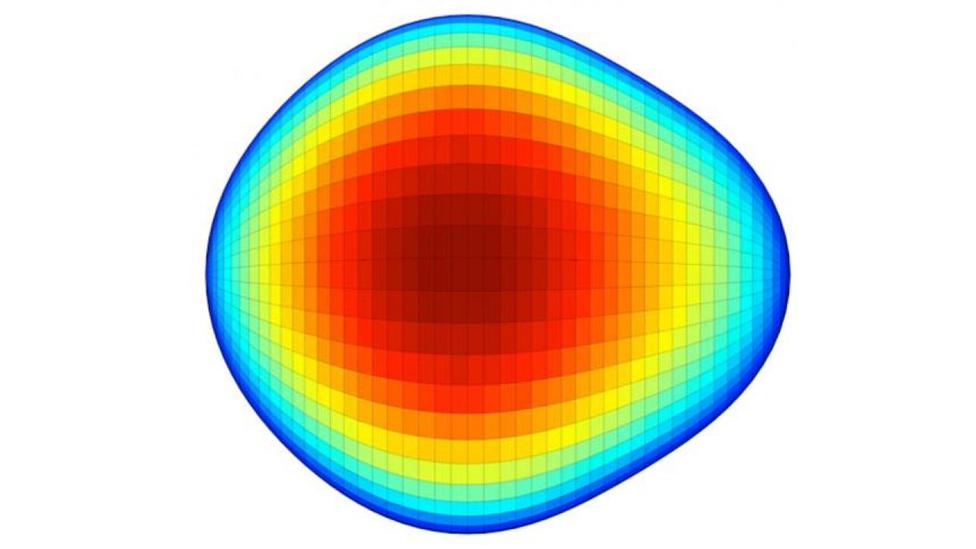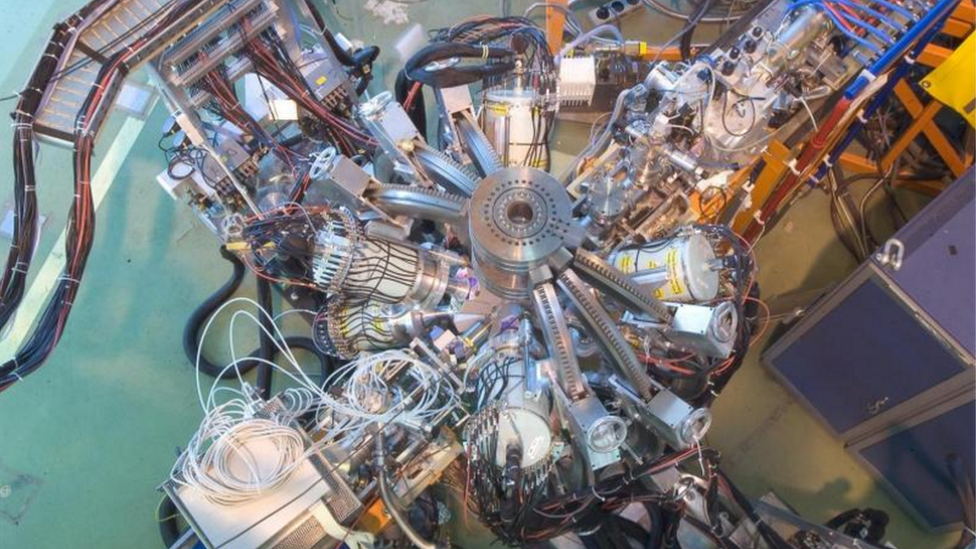Pear-shaped nuclei discovery challenges time travel hopes
- Published

The pear shape was first discovered in the nucleus of the isotope Radium-224
Scottish-based scientists have discovered that the nuclei of some atoms are not symmetrical.
The finding challenges some of the fundamental concepts of physics.
It could explain why there is more matter than antimatter - but it may also end hopes of time travel.
The Universe has a fundamental problem. Why is there so much stuff in it?
Think back to the Big Bang. That's a bit of a stretch, admittedly. It was getting on for 14 billion years ago.
The Big Bang is the prevailing theory about how everything we know began. The theory states that the Bang created equal amounts of matter and antimatter.

Dr Scheck will lead a team carrying our further wort at the ISOLDE facility at CERN
And that's where the Universe's problem begins.
You might expect those equal amounts of matter and antimatter to have cancelled each other out. Their masses would have been transformed into energy, leaving something akin to a warm glow and nothing else.
But as I'm sure you've noticed, that hasn't happened. Everything around us consists of matter: my keyboard, your home, the planet on which we stand, interstellar dust, other galaxies.
Where is all the antimatter?
Scientists at the University of the West of Scotland (UWS) think they can point to the reason. Although it could mean the textbooks will need a rewrite.
Most of the fundamental theories of physics are based on symmetry. That symmetry dictates, among other things, that the nuclei of atoms can be one of just three shapes: spherical, discus or rugby ball.
But Dr Marcus Scheck at UWS and Professor Peter A Butler of the University of Liverpool have discovered a fourth form of nucleus.
It's pear-shaped.
They first discovered the pear shape in the nucleus of the isotope Radium-224. It was part of an international effort that also involved researchers from the United States, France, Germany, Belgium, Finland, Switzerland, Spain, Poland and Sweden.

Dr Who may be interested in the findings and its implications for time travel
The finding has since been confirmed in a second study, this time of the nucleus of Barium-144. The study also involved Dr Scheck and was led by Ching-Yen Yu from the Lawrence Livermore National Laboratory in California.
Dr Scheck says the pear shape shouldn't be there, according to the currently-accepted model of physics.
He says: "Further, the protons enrich in the bump of the pear and create a specific charge distribution in the nucleus.
"This violates the theory of mirror symmetry and relates to the violation shown in the distribution of matter and antimatter in our universe."
Direction in time
In other words, a pear-shaped nucleus points to why our Universe contains so much more matter than antimatter.
But that's not all it points to.
Dr Scheck says: "We've found these nuclei literally point towards a direction in space. This relates to a direction in time, proving there's a well-defined direction in time and we will always travel from past to present."
So time travel would appear to be a non-starter.
Dr Scheck will now lead a team to repeat the experiment. They'll be doing it at the Isotope Separator On Line Detector (ISOLDE) facility at CERN in Switzerland.
ISOLDE can produce Barium-144 nuclei in huge amounts. That will come in handy because the initial measurements suggested the nuclei were even more pear shaped than had been expected.
The research gives us a deeper insight into where - and why - we are.
Although if time really can only travel in one direction, it's bad news for Doctor Who.